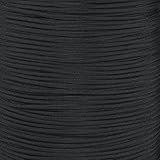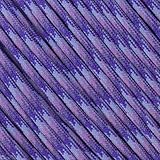When venturing into the great outdoors, preparedness can often be the most crucial factor determining safety and comfort. Whether for a planned camping trip or an unexpected emergency, a solid foundation in wilderness survival and bushcraft skills is invaluable. These self-reliance techniques, honed over centuries, provide the knowledge to adapt and thrive using natural resources and ingenuity. The ability to start a fire, secure clean water, or improvise essential gear can make a profound difference in challenging environments. The insights shared in the accompanying video offer a glimpse into practical methods that can be adopted by anyone looking to enhance their outdoor skills and emergency preparedness.
Harnessing Nature’s Multitasker: The Power of Pine Sap
One of the most remarkable resources readily available in many forested areas is pine sap, scientifically known as resin. This sticky substance, naturally exuded by pine trees as a protective balm against injuries and infections, holds a multitude of uses for the savvy outdoors person. Its natural antibacterial properties are widely recognized, making it an excellent field dressing for minor cuts and scrapes. When applied to a wound, it not only helps to prevent infection but its inherent stickiness can also assist in stopping bleeding, effectively serving as nature’s own liquid bandage and antiseptic ointment.
Beyond its medicinal applications, pine resin is a formidable ally in fire starting. It is notably flammable, possessing the unique characteristic of burning even when wet. This particular trait makes it exceptionally useful for igniting damp tinder or kindling, a common challenge in wet or humid conditions. For instance, a substantial chunk of pine sap, when ignited atop a pile of dry lint or finely shredded bark, will burn long and hot, providing the sustained heat needed to dry out and eventually ignite larger, damp sticks. Furthermore, these resin-rich chunks can be attached to sticks to fashion rudimentary torches, offering a portable light source or a means of signaling for help in low-visibility situations.
Igniting fresh pine resin directly with a ferrocerium rod can be challenging due to its viscous nature. However, a dried, aged piece of resin can be crushed into a fine powder. This powdered form significantly increases the surface area, allowing it to catch sparks from a ferrocerium rod more readily. While it may require persistent effort, ignition is achievable, providing a reliable flame source even with primitive tools. For future fire starting, portable fire starters can be created by wrapping pine resin within processed cedar bark fibers. These compact bundles are easily ignited by sparks, burning fiercely for approximately five to six minutes, a critical duration for establishing a robust fire in windy or wet environments.
The versatility of pine resin extends to impromptu repairs. A small hole in waterproof gear, such as a rain jacket, tarp, or rubber boot, can be temporarily sealed using fresh pine resin. By working the sticky resin directly over the damaged area, a waterproof patch is created. This immediate fix can prove invaluable, preventing discomfort and potential hypothermia in adverse weather conditions. Testing the repair by filling the patched item with water, as demonstrated, confirms its efficacy in preventing leaks, showcasing a practical application of this readily available natural resource.
Unlocking the Potential of Fatwood: Nature’s Kerosene
Imagine a piece of wood naturally infused with a potent, flammable fuel; that is essentially what fatwood is. This highly sought-after material, often found in the heartwood of dead pine branches, especially close to the trunk where resin concentrates, is saturated with pine resin. This saturation gives fatwood its distinctive, strong pine scent and exceptional flammability. When processed correctly, even small shavings of fatwood can ignite almost instantly, burning with an intense heat comparable to wood soaked in oil or kerosene.
Harvesting fatwood from dead pine branches, often referred to as “pine knots,” can be achieved even without a saw. Smaller branches can be broken off close to the trunk using a foot or hand, exploiting the natural weakness at the branch collar. The ease with which fatwood lights, coupled with its prolonged burn time, makes it an ideal accelerant for establishing fires quickly. Its inherent windproof qualities further enhance its utility, ensuring a steady flame even in gusty conditions that might extinguish other tinders.
A remarkable demonstration of fatwood’s resilience is its ability to ignite even after being submerged in water. By scraping very fine shavings from a piece of fatwood with the back of a knife or a specialized scraper, followed by slightly larger shavings, a highly combustible pile is created. This material catches sparks from a ferrocerium rod almost immediately, proving its reliability in wet scenarios. This resistance to moisture is a significant advantage in wilderness survival, where dry tinder can be scarce.
Beyond being a superior fire starting aid, fatwood can also be fashioned into long-lasting candles or torches. By making a crisscross split approximately one-third of the way down a fatwood stick and propping the splits open with a small twig, a miniature Swedish torch-like structure is formed. When lit, this construction provides a sustained, windproof flame, emitting a pleasant natural pine scent, ideal for illuminating a campsite or creating a focal point. Larger versions of this design, constructed from longer fatwood branches, have been observed to burn for as long as an hour, offering a substantial light source or emergency signal. Should the flame need to be extinguished, submerging the burning end in water provides an effective and safe method.
Strategic Firecraft: The Stealth and Efficiency of the Dakota Fire Hole
In certain wilderness survival scenarios, discretion can be as important as utility. The Dakota fire hole, a traditional bushcraft technique, offers a solution for creating a fire that is both highly efficient and remarkably stealthy. This ingenious ground-level fire pit minimizes smoke output and conceals the flame, making it an excellent choice when one’s location needs to remain undisclosed.
The construction of a Dakota fire hole involves digging two adjacent holes that are connected underground by a smaller tunnel. One hole serves as the fire pit, where the fuel is placed, while the other functions as an air intake. For optimal efficiency, the air intake hole is strategically positioned upwind of the fire hole. As the fire consumes oxygen, fresh air is drawn in through the intake tunnel, creating a highly efficient draft. This constant airflow promotes complete combustion, resulting in a fire that burns very hot with significantly less smoke compared to an open-air campfire.
The benefits of a Dakota fire hole extend beyond stealth. Its enclosed nature provides excellent wind protection, preventing embers from scattering and ensuring a consistent burn. The concentrated heat makes it an incredibly efficient method for cooking food and boiling water, functioning much like a natural “rocket stove in the ground.” Once the fire is no longer needed, it can be easily extinguished and concealed by simply filling both holes with dirt, leaving minimal trace of its presence. However, caution is advised to avoid accidental falls or injuries, as a hidden fire pit can pose a risk.
Enhancing Essential Gear: Practical Lighter Modifications
Even commonplace items like a Bic lighter can be optimized for enhanced utility and self-reliance in the wild. Simple modifications can transform this everyday tool into a more robust fire starting companion and a versatile survival asset.
One effective modification involves wrapping a lighter with duct tape. Beyond its obvious applications for repair and improvisation, duct tape itself possesses highly flammable properties. A small piece can be fashioned into a hollowed tube and ignited, providing a flame that can last for several minutes, acting as a convenient secondary fire starter. This dual-purpose tool ensures that a crucial fire source is always backed by additional kindling and repair material.
Another practical adjustment is the removal of the child safety guard located on the lighter’s striker wheel. While designed for safety, this guard can impede easy ignition, especially when dexterity is compromised due to cold weather or injury. Prying off this small metal piece (with care, as it can spring off forcefully) allows for a smoother, more direct strike, facilitating quicker and more reliable flame production in critical moments.
Should a lighter become wet, its functionality is obviously impaired. However, revival is often possible with a few straightforward steps. Initially, shaking the lighter vigorously can dislodge much of the trapped water. Blowing directly into the top mechanism can help expel remaining moisture. After removing the safety guard, the lighter can be rolled upside down repeatedly against a dry surface, such as clothing, to further wick away water from the internal components and striker wheel. Alternatively, the striker wheel can be manually dried with a shirt while turning it, a technique that often restores function quickly without excessive wear on the ferrocerium rod.
Mastering Natural Tinders: From Birch Bark to Cattail Fluff
The ability to identify and process natural tinders is a cornerstone of bushcraft skills, offering reliable fire starting options when manufactured aids are unavailable or depleted. Nature provides an abundance of materials, each with unique properties that can be leveraged for a successful blaze.
Birch bark is widely regarded as one of the finest natural tinders available. Its outer layers contain oils that render it both waterproof and highly flammable, allowing it to ignite readily even when wet. By scraping fine shavings from the outer bark with a knife, a fluffy, highly combustible material is produced. This preparation increases the surface area, making it ideal for catching a spark.
Another excellent natural tinder is cattail fluff, found compacted within the seed heads of cattail plants. When broken open and fluffed up, these fine fibers are exceptionally receptive to even the smallest spark, igniting almost instantaneously. However, cattail fluff burns out very quickly. For sustained ignition, it is often paired with a slower-burning tinder like birch bark shavings. The cattail fluff catches the spark and bursts into flame, which is then transferred to the birch bark, extending the burn and allowing larger kindling to catch fire. This combination demonstrates a deep understanding of tinder properties and how to optimize them for reliable fire starting, especially with an empty lighter that only provides a spark.
In situations where more traditional tinders are scarce, improvisation becomes key. Even the lint scraped from a cotton sock can serve as an effective tinder. The fine fibers readily accept a spark from a ferrocerium rod, providing a surprising source of ignition from an often-overlooked item. These primitive skills highlight the importance of adaptability and resourcefulness in wilderness survival.
Essential Water Management: Filtration and Purification in the Wild
Securing a reliable source of potable water is paramount for wilderness survival. While finding water is often possible, ensuring its safety for consumption requires knowledge of both filtration and purification techniques.
A basic method for filtering out heavy sediment can be improvised using readily available natural materials. By heating a section of birch bark, its flexibility is enhanced, allowing it to be bent into a funnel shape without breaking. A piece of clean clothing, such as a cotton T-shirt, is then placed inside the funnel, acting as a filter medium. Water poured through this setup will have most of its particulate matter, such as mud and debris, removed, resulting in visibly clearer water. This mechanical filtration is effective for improving clarity, as demonstrated by the significant reduction of “nasty mud and sediment.”
It is crucial to understand that while filtration removes physical impurities, it does not purify water by eliminating harmful microorganisms like bacteria, viruses, or parasites. Therefore, filtered water must always be purified before consumption. The most widely recommended method for water purification in the field is boiling. Bringing water to a strong, rolling boil for at least one minute is a generally accepted standard to neutralize most waterborne pathogens, making the water safe to drink. This two-step process—first filtering to remove sediment, then boiling to purify—is a fundamental wilderness survival skill, preventing illnesses that could severely compromise one’s ability to survive.
Improvised Comfort and Utility: Making the Most of Natural Resources
Ingenuity in the wild extends beyond immediate threats, encompassing ways to enhance comfort and lighten the load of physical tasks. Simple bushcraft techniques can transform common natural items into practical tools.
Transporting a pile of long branches or logs, especially without a saw, can be cumbersome. An effective solution involves leveraging two closely spaced trees to break longer branches into more manageable pieces. Subsequently, a personal belt can be repurposed as a log carrier. By piling the processed logs onto the unfastened belt and then strapping them up, a surprisingly efficient carrier is created, allowing logs to be transported with one hand while keeping pants up with the other. This clever use of existing gear streamlines the task of gathering firewood, an essential component of wilderness survival.
Staying warm in cold conditions is another critical aspect of self-reliance. Cattail seed fluff, in addition to its use as tinder, proves to be an excellent natural insulator. The fluff, which is highly compacted in its seed head, expands significantly when broken open, creating a voluminous, air-trapping material. When stuffed into clothing, such as a shirt, this cattail fluff acts remarkably like goose down, trapping layers of air to provide effective insulation against the cold. The more thoroughly fluffed and distributed the material, the better its insulating properties. This natural solution offers a comforting warmth, demonstrating how closely observing and utilizing nature’s provisions can significantly enhance comfort and safety in challenging environments, further solidifying one’s outdoor skills for wilderness survival.











